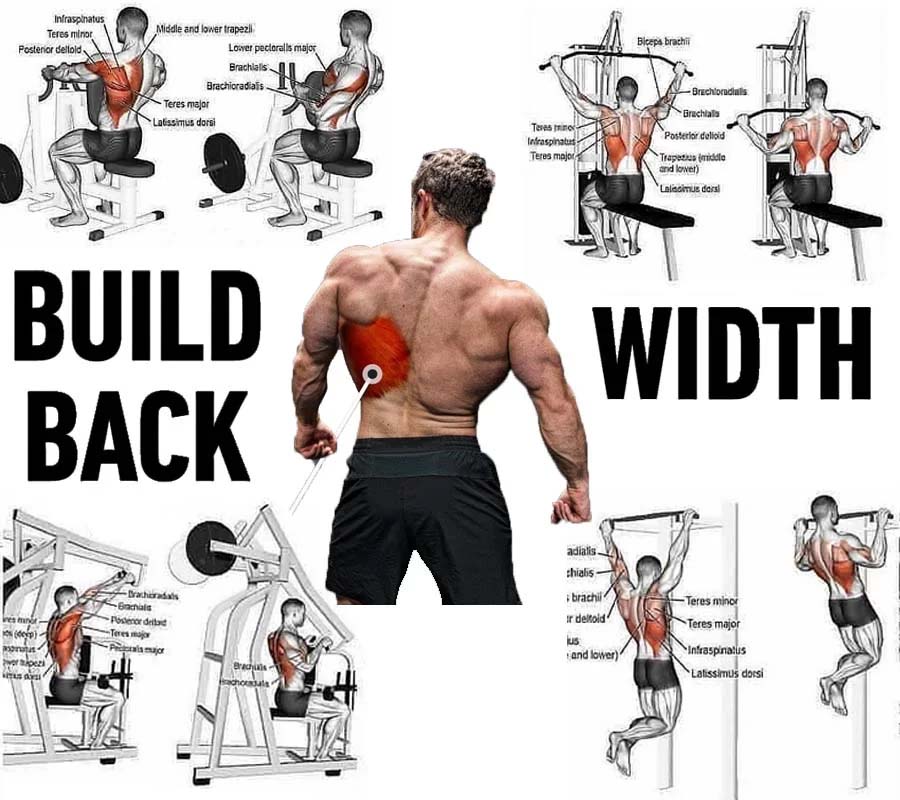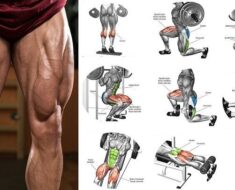
Even just a negative experience is enough to make you understand how serious what we are talking about is. No doubt back and neck pains are among the most annoying. They don’t give you a respite; they do not allow you to do carefree workouts, to walk and enjoy your favorite activities.
So in this post I reveal the 6 best back exercises that make you defeat all the pains mentioned in a flash and without problems.
More importantly, they will never return in the future. So take a look at the winning strategy right away.
To make this solution truly effective, we must first define the reason why the pains arise. This is the prerequisite if you wish to defeat your problem once and for all.
Bad posture
I want to point out that back and neck pain is just a warning from your body that you need to take action as soon as possible. And if we are precise, we understand immediately that the reason for all these problems lies in your back muscles.
The modern lifestyle forces you to spend a lot of time behind the computer, in the car, at conferences. At the same time you forget about the “counterweight”, and this is seen in your well-being.
In addition to this, you “scrolle” assiduously the screen of your smartphone, so it is not strange that your posture is ruined. As a result, your back muscles are not effective and do not perform their main task.
Good posture
This means that too much pressure falls on those parts of the back that hurt, namely. The neck, the part of the shoulder blades and, of course, the back.
Therefore your main task is to awaken all the lower back muscles, activate them and allow them to perform their main function. In this important project a decisive role is played by the back exercises which I will reveal to you shortly.
Just with them you can activate all the back muscles.
THE BACK MUSCLES
These are:
- the latissimus dorsi muscle ( musculus latissimus dorsi ),
- the trapezius muscle ( musculus trapezius ),
- the large rhomboid muscle ( musculus rhomboideus major ),
- the small rhomboid muscle ( musculus rhomboideus minor ) e
- the levator muscle of the shoulder blades ( musculus levator scapulae ).
THE BIG DORSAL MUSCLE
the latissimus dorsi muscleThe latissimus dorsi muscle is the one you can find most easily, because it starts in your armpits and continues to the lumbar region. It is especially important because it allows the shoulder blades to rotate internally.
THE KEYSTONE MUSCLE
Unlike the latissimus dorsi muscle, the trapezius muscle is the one that occupies the largest part in your body by length, so we divide it into descending, transverse and ascending parts.
Its main task is above all the approach of the shoulder blades. So when you move your arms back, you immediately feel the activation of these muscle fibers.
THE RHOMBOID MUSCLE
Next on the list is the rhomboid muscle. This too is divided, that is, into small and large. Even if it occupies a small part of your back, it plays an important role. mThe muscle fibers of this unit allow internal rotation of the shoulder blades.
THE ELEVATOR MUSCLE OF THE SCAPULAS
In order for you to raise and lower your shoulder blades, the fourth muscle still thinks about it. The levator muscle of the shoulder blades. You activate it when you shrug.
HOW TO TRAIN THE BACK MUSCLES
In addition to the activation of all the muscle groups listed, a decisive role in defeating the problems is also the constancy in the achievement of the exercises.
Do not forget that forced posture is part of your daily life, which means that the solution will only be effective if you use it at least 2 or 3 times a week. As you will soon understand, it is not a problem at all.
Right at the end I prepared a 10 minute guided routine, which takes you through all the back exercises step by step. So I propose that you start as soon as possible.
THE BEST BACK EXERCISES
Start by putting yourself on all fours. Place your hands and knees at the same shoulder width.
The angles between the arms and the torso and between the thighs and the torso are 90 degrees from the initial position slowly bend the lumbar part and move your gaze upwards,
when you reach the extreme point, change the direction of the movement,
while moving the lumbar part from the surface, make sure that the head also follows the movement, which means that you move your gaze downwards,
breathing must be relaxed all the time and uniform and controlled movement.
Approaching the surface
Get down on the floor and hold on your hands and knees,
your thighs and upper body form a right angle, your arms are positioned in front of you,
from the initial position push your hips backwards, which means that the buttocks are approaching the heels, At the same time your chest approaches the surface and the head moves between the arms.
When you lie down completely, forming a straight line with your arms and upper body, hold this position for a moment and then return to the starting position.
Get down on the floor and lie on the ground on your stomach,
lean on your forearms and form a right angle with your elbows,
in the last phase move your shoulders back, open your chest and move your gaze in front of you,
hold this position for 20 or 30 seconds and then relax.
PLANK WITH ALTERNATE LIFTING OF ARMS AND LEGS
Start by putting yourself on all fours,
place your hands and knees at the same shoulder width,
the angles between the arms and the torso and between the thighs and the torso are 90 degrees,
from the initial position, lift the opposite leg and arm in a controlled movement,
doing so make sure you don’t move your pelvis and keep your chest parallel to the surface,
your gaze is on the ground and when you reach the extreme point hold the position for a second.
ELONGATION WITH ROTATION OF THE HIPS
While lying down, move your knee past the opposite leg, bend it and bring it closer to the floor with light pressure,
move the opposite arm in the opposite direction, which is also followed by the gaze,
when you reach an extreme stretch, hold the position for 20 to 30 seconds, then repeat the exercise in the opposite direction.
APPROACHING THE KNEE
Lie on your back,
bring the knee of one leg close to the chest,
in stretching it also helps you push the arms, which you place under the knee,
the opposite leg rests and is fully extended.
it is an exercise in which you hold the static position for 20 to 30 seconds, after which you repeat the movement with the other leg.
Just one click and you can already get started.
Still important information.
If your pain is very severe or a consequence of an accident or trauma, before starting training, contact your doctor who is aware of your health.
It may happen that the cause of your pain is not just a muscle imbalance.






